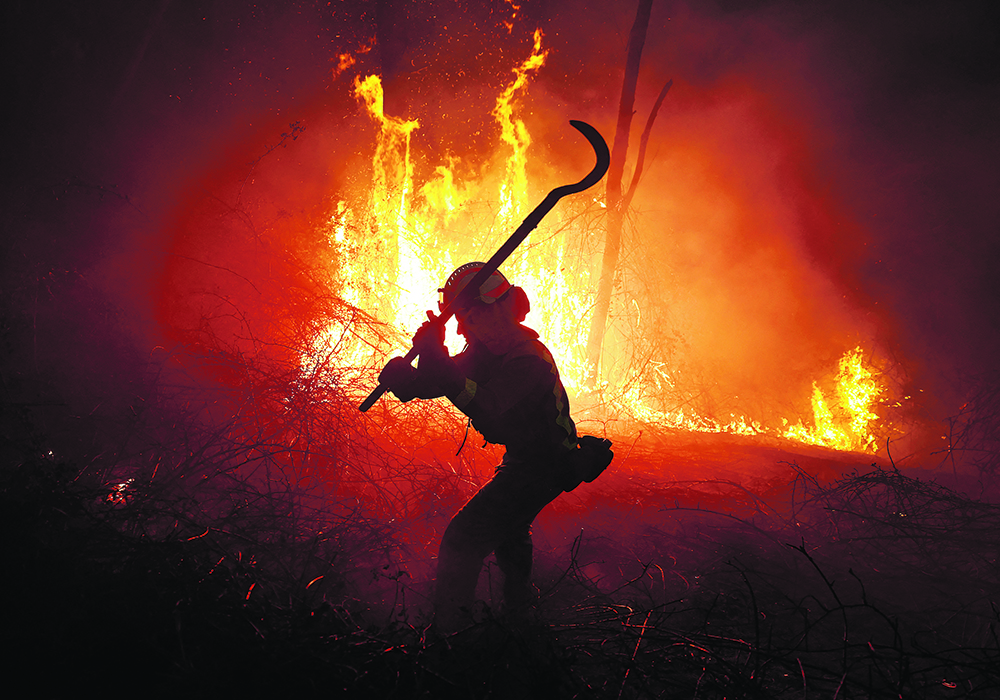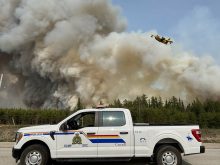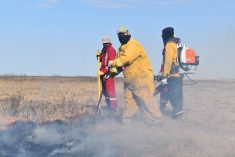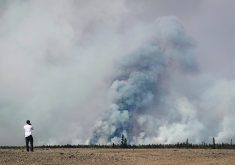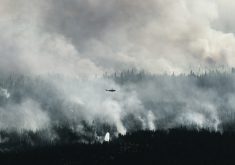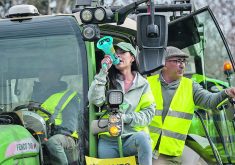OVIEDO, Spain (Reuters) — Farmers across Europe have jammed roads, burned tires and dumped manure in protest at a host of pressures threatening their livelihoods and way of life. In the province of Asturias, Spain, authorities are preparing for worse.
Last spring, in an unprecedented conflagration there, nearly 300 wildfires leapt across motorways, forcing the evacuation of hundreds of residents and reaching the edge of regional capital Oviedo. The authorities blamed many of the fires on farmers.
Decades-old grievances about government interference in traditional farming methods are combining with climate change to create tinderbox conditions, authorities say.
Read Also

Canadian Food Inspection Agency extends chronic wasting disease control program consultation deadline
Date extended for consultation period of changes to CWD program
The regional government, prosecutors and environmental groups say that some cattle producers deliberately set last year’s blazes to free up low-cost grazing pasture, fires that got out of hand due to exceptionally warm, dry conditions. The farmers deny this.
Four unnamed people were arrested and 31 are under investigation for the alleged arson, police said.
Alejandro Calvo, head of Asturias’ fire prevention and extinction department, said the region has increased its budget to avert and quench wildfires by almost 20 percent to US$75.7 million and hired more firefighters and foresters to establish 24-hour surveillance systems.
At the root of the problem, the authorities say, is the farmers’ ancestral practice of intentionally burning scrub. The chestnut-coloured cattle that roam Asturias’ mountains and valleys date back to the Iron Age. Their grass-fed flesh is relished by gourmets and their free-range grazing prized over meat reared under intensive methods.
Vegetation left unchecked grows chaotically over grasslands, limiting access for cows, which can’t digest woody or thorny plants. A carefully timed blaze can clear the area, generate new swaths of pasture and deter predators.
However, bureaucracy and warmer weather have changed that story. Since 2004, a permit is legally required to carry out controlled burns. Acquiring one involves presenting a detailed plan, a topographical map of the area and documents proving land ownership, among other restrictions.
As well, Calvo says the region has seen a consolidated increase in average temperatures of two degrees over the past decade — part of a broader trend across Spain confirmed by the meteorological office — making traditional fire-setting more dangerous.
“There’s … a clear relationship between areas where there’s greater livestock farming activity and the incidence of fires,” Calvo said.
On the other side of the argument, Jose Ramon Garcia, head of the farmers’ union UCA, blames the authorities.
“They are always trying to blame the cattle farmers, saying we do it to generate pastures, and that’s a lie,” said Garcia.
He said the regional leadership was not managing flammable undergrowth well enough, so most large fires are the result of natural causes. Deliberate ones cause limited damage, he argued.
“We have so much undergrowth that any lightning strike causes these big fires that threaten people and destroy everything in their wake,” said Garcia.
He himself was convicted in a local court in 2016 of illegally starting a fire that devastated 94 acres, which he denies. Spain’s Supreme Court revoked his prison sentence on appeal but upheld the conviction.
According to the most recent official data from Spain’s environment ministry, events such as lightning are to blame for fewer than five in 100 fires in the region. That data says nearly eight in 10 fires in Asturias are started on purpose.
Calvo knows the old methods of fire management from experience. The son of a cattle farming family who grew up in the area, he said he would watch farmers set fires to fight back overgrowth. He remembers how as a child, he would help collect ferns to reduce the risks, and help extinguish the blazes himself.
But now, he said, as more and more young people move to the cities, there aren’t enough people in the region to clear the brush or keep an eye on fires when they start to smoulder. Instead, his department is running public awareness campaigns about the dangers of intentional burning.
“We’re trying to make people understand that this isn’t acceptable, that it can be a felony and therefore must be prosecuted,” said Calvo in his office in Oviedo.
In Asturias, the controlled burning of a maximum of 25 acres per day is only allowed during daylight hours, when wind speeds are low and with at least one regional official present until no smoke has been visible for two hours.
Months after last year’s blazes, a group of elderly residents sitting on a bench in the town of Navelgas said they had never seen the like.
“I was driving down the road, with the smoke billowing from both sides, and I just wanted to cry,” said one man.
Navelgas was a hub of gold mining during Roman times. The gold has long gone, cattle farming is its mainstay and its population is just 720. Last August, Spain’s national statistics institute counted the settlements in the country that contain only one person and found the most were in the mountainous northwest, including 337 in Asturias.
Economic frustrations in the region date back to Spain’s entry into the European Community in 1986, which resulted in a swift adjustment away from a primarily agrarian society.
Farming now contributes slightly more than one percent to the region’s economy. It employed fewer than 6.5 percent of the population in 2000 and that has fallen significantly, according to data from the regional government.
EU subsidies, including the Common Agricultural Policy, helped mitigate the effects, but a European Union survey in October 2023 said the bloc’s small farmers are struggling to finance their operations through banks.

